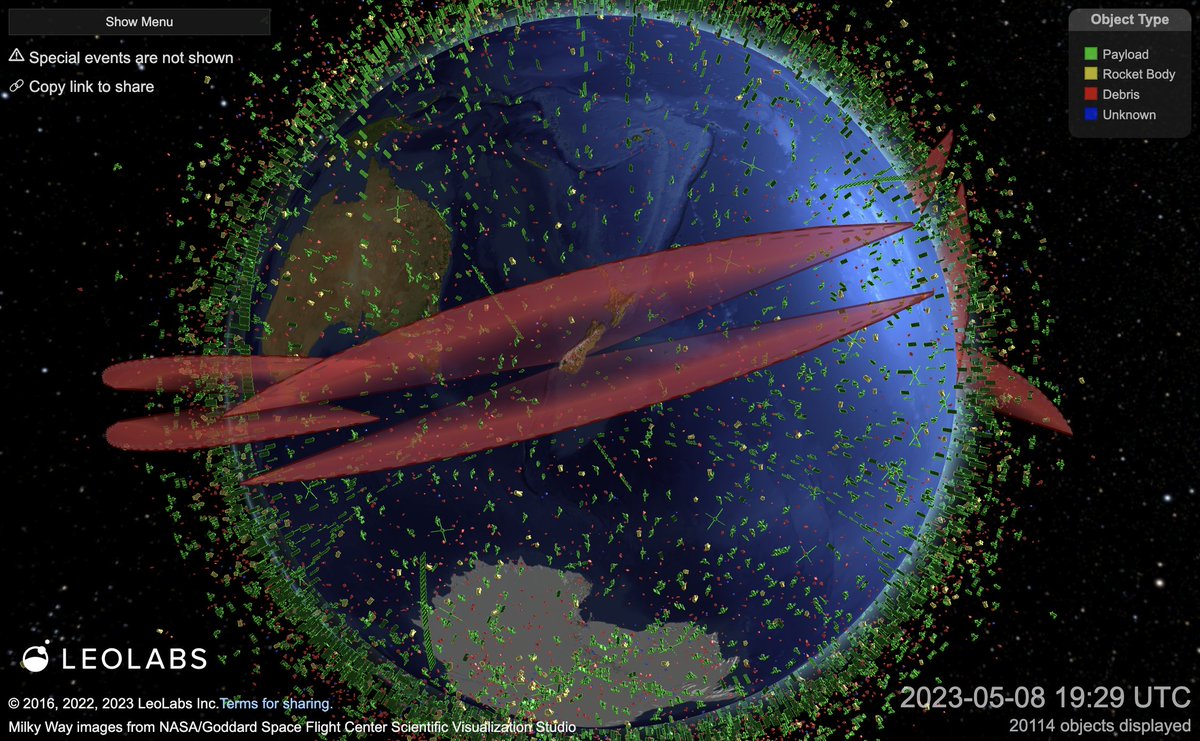1/ This event continues to be very high risk and will likely stay this way through the time of closest approach. Our system generates new conjunction reports 6-8x per day on this event with new observation data each time.
2/ Current risk metrics from our most recent CDMs:
Miss distance: 12 meters (+18/-12 meters)
Probability of Collision: >10%, scaled to account for large object sizes
Relative velocity: 14.7 km/s
Miss distance: 12 meters (+18/-12 meters)
Probability of Collision: >10%, scaled to account for large object sizes
Relative velocity: 14.7 km/s

3/ Shortly after TCA, we will have a direct pass of CZ-4C R/B over our Kiwi Space Radar in New Zealand. We have scheduled a search mode scan during this time to ensure we only see two objects as expected and hopefully confirm that no new debris is detected. 

• • •
Missing some Tweet in this thread? You can try to
force a refresh











